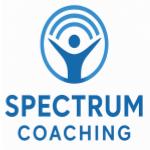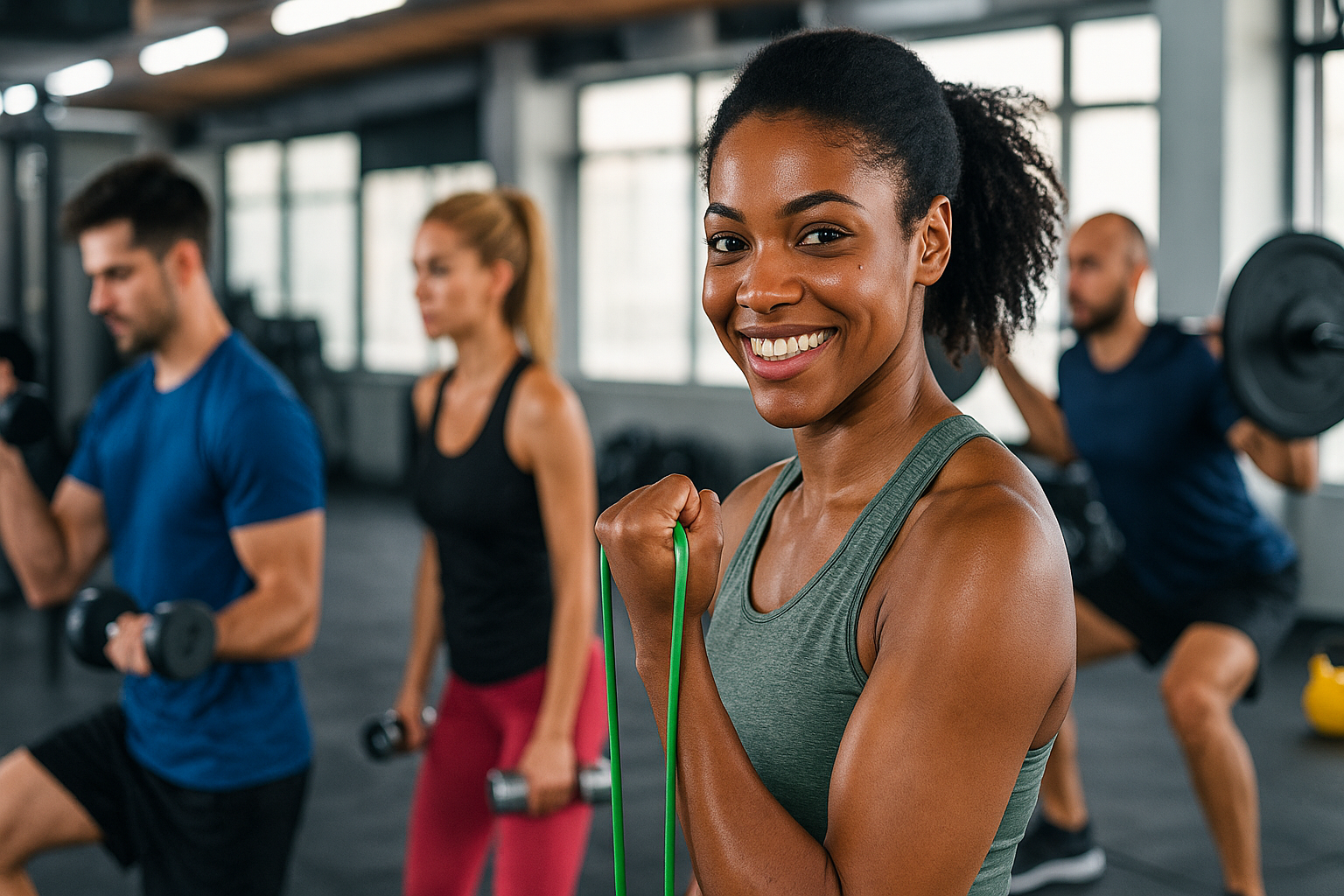Fitness built for neurodivergent minds—custom workouts, focus tools, and accountability that last.
Fitness and Yoga Strategies for Neurodiverse Empowerment in 2025
Empowerment is about finding tools that work for your unique needs. For neurodiverse individuals, fitness and yoga offer transformative potential. In 2025, innovations and inclusivity have reshaped these practices to cater to diverse cognitive and sensory profiles. This guide explores actionable strategies tailored for neurodiverse empowerment.
The Role of Fitness in Neurodiverse Well-Being
Fitness enhances both mental and physical health, making it vital for neurodiverse individuals. Movement fuels cognitive clarity and emotional regulation. Modern fitness approaches now include neurodiverse-friendly features.
1. Adapted Fitness Programs
Adapted programs address sensory sensitivities and coordination challenges. Virtual classes let participants set their pace in a familiar setting. Fitness apps now include customizable cues to reduce overstimulation. These advancements help neurodiverse individuals enjoy consistent, stress-free workouts.
Incorporating adaptive equipment has also revolutionized fitness for neurodiverse individuals. Weighted exercise balls, resistance bands with texture, and adjustable machines allow for more personalized workouts. These tools help individuals feel grounded while meeting sensory needs. The availability of such resources has expanded significantly in recent years.
2. Mind-Body Connection
Activities like swimming and cycling support focus and body awareness. Neurodiverse-friendly gyms emphasize quiet zones and sensory-friendly equipment. Exercises that synchronize movement with breathing, like tai chi, enhance mindfulness and reduce anxiety. They also improve motor coordination.
Functional fitness exercises, such as squats and balance drills, further enhance motor planning and coordination. These exercises align with daily movements, helping participants feel confident and capable in everyday tasks. When combined with proper breathing techniques, they create a holistic approach to fitness.
3. Routines That Work
Routine builds reliability, essential for neurodiverse people. Start with short, achievable sessions. Schedule consistent workout times to build momentum. Tailoring routines to personal preferences ensures they’re enjoyable and sustainable.
For example, creating a visual or digital calendar can keep fitness goals organized. Many neurodiverse individuals benefit from gamified systems, where progress tracking feels like leveling up in a video game. These tools make routines engaging and manageable.
Yoga as a Tool for Neurodiverse Balance
Yoga offers more than flexibility; it nurtures balance, focus, and emotional regulation. With 2025’s innovations, yoga accommodates diverse needs.
1. Sensory-Aware Yoga Practices
Instructors now receive training in sensory-friendly techniques. Classes offer noise-canceling headphones and textured mats for sensory grounding. Dim lighting and calming colors create environments conducive to focus. These adjustments reduce sensory overload and create calmness.
Additionally, aromatherapy is gaining popularity in neurodiverse-friendly yoga classes. Scents like lavender and chamomile can promote relaxation, while citrus scents energize. Students are encouraged to choose what works best for them, fostering a sense of control over their environment.
2. Pacing and Predictability
Structured classes empower participants to follow at their speed. Visual cues and pre-recorded classes improve accessibility. Short sessions allow focus without overextending energy. Predictable routines encourage relaxation and create trust in the practice.
Yoga playlists tailored for neurodiverse individuals are becoming a staple. Slow, rhythmic music helps maintain focus, while silence or nature sounds provide alternatives for those who prefer minimal auditory input. These elements make yoga more approachable and enjoyable.
3. Breathing Techniques for Mindfulness
Pranayama (yogic breathing) helps manage emotional regulation. Techniques like alternate nostril breathing reduce stress and improve focus. Deep breathing counters sensory overstimulation. Regular practice helps integrate these benefits into daily life.
Adding visualization exercises enhances the effectiveness of breathing practices. For example, imagining a calming wave or a glowing light during breathwork deepens relaxation. These methods are simple yet impactful for managing daily stressors.
Building Fitness and Yoga Routines at Home
A home-based fitness or yoga routine offers privacy and flexibility. Personalizing your environment helps meet unique neurodiverse needs.
1. Setting Up a Sensory-Friendly Space
Choose a quiet, distraction-free area. Use soft lighting and neutral colors for a calming atmosphere. Include sensory tools like weighted blankets or fidget devices nearby. A familiar environment reduces distractions and promotes focus.
Incorporating elements like essential oil diffusers or sound machines can further enhance the environment. For individuals sensitive to certain scents or sounds, these tools can be customized to create the perfect space. A sensory-friendly environment boosts engagement and consistency.
2. Leveraging Technology
Apps and platforms provide guided workouts and yoga sessions. Programs designed for neurodiverse users offer customizable features. Wearables track progress without overwhelming sensory input. Virtual communities provide connection without social pressures.
Technology also enables adaptive scheduling. Many apps now allow users to set reminders that align with their energy levels. For example, morning workouts can be paired with energizing affirmations, while evening yoga sessions focus on winding down.
3. Staying Consistent
Consistency is key. Use visual schedules to plan sessions. Celebrate small milestones to maintain motivation. Start with short practices to avoid burnout and gradually build duration.
Accountability partners can also help maintain consistency. Sharing goals with a friend or family member creates a support system. For those who prefer independence, journaling progress provides a sense of accomplishment and helps track growth over time.
Social Fitness: Building Connections Through Movement
Shared activities foster community while improving health. Neurodiverse-friendly group fitness options have grown in 2025, offering inclusive opportunities.
1. Inclusive Group Classes
Many studios now offer neurodiverse-focused classes. These environments emphasize acceptance and cater to varying needs. Smaller class sizes ensure personal attention. Instructors often provide modifications for different abilities.
Community centers are also expanding their offerings, including adaptive dance classes and team sports. These activities focus on fun and collaboration rather than competition. Participants build social skills while engaging in enjoyable group dynamics.
2. Accessible Outdoor Activities
Hiking groups and community sports clubs now focus on accessibility. These activities reduce sensory challenges by utilizing natural environments. Outdoor spaces allow participants to engage at their comfort level.
Many parks have introduced sensory trails, featuring paths designed for grounding exercises. These trails often include tactile stations and mindfulness prompts. They offer a calming yet active way to connect with nature and others.
3. Building Confidence Through Interaction
Engaging in group activities fosters self-confidence and social skills. Sharing progress with like-minded individuals creates supportive bonds. Celebrating achievements together strengthens these connections.
Mentorship programs within fitness communities are gaining traction. Experienced members guide newcomers, offering encouragement and advice. These relationships build trust and create a sense of belonging, motivating participants to stay involved.
Empowering Mindset Shifts for Fitness and Yoga Success
Adopting the right mindset transforms fitness and yoga practices into empowering habits. Mindset plays a crucial role in maintaining motivation.
1. Embracing Neurodiversity
Recognize that your journey is unique. Accepting your individuality reduces pressure to conform to traditional fitness standards. Focus on progress rather than perfection.
Affirmations tailored to neurodiverse experiences can reinforce this mindset. Statements like “I honor my pace” or “My progress is meaningful” help foster self-compassion. Mindset shifts begin with acknowledging your strengths and celebrating your efforts.
2. Celebrating Small Wins
Every achievement, no matter how small, is a step forward. Track progress visually to stay motivated. Positive reinforcement fosters resilience and encourages consistency.
Vision boards are a popular tool for celebrating wins. Filling them with images and words that reflect goals keeps motivation high. This creative practice aligns with neurodiverse strengths, such as visual thinking and pattern recognition.
3. Finding Joy in Movement
Engage in activities that bring you joy. Dance, play, or try a new fitness trend. Joyful movement makes routines sustainable and fulfilling.
Exploring unconventional fitness activities can spark joy. Trampoline workouts, circus arts, or martial arts provide exciting alternatives to traditional exercises. When movement feels like play, it becomes a natural and enjoyable part of life.
Conclusion: Fitness and Yoga Strategies for Neurodiverse Empowerment in 2025
Fitness and yoga empower neurodiverse individuals by addressing their unique needs. Innovations in 2025 provide more accessible and inclusive options. By embracing these strategies, neurodiverse individuals can build fulfilling, health-enhancing routines. Transform your life with fitness and yoga, tailored for your empowerment.


